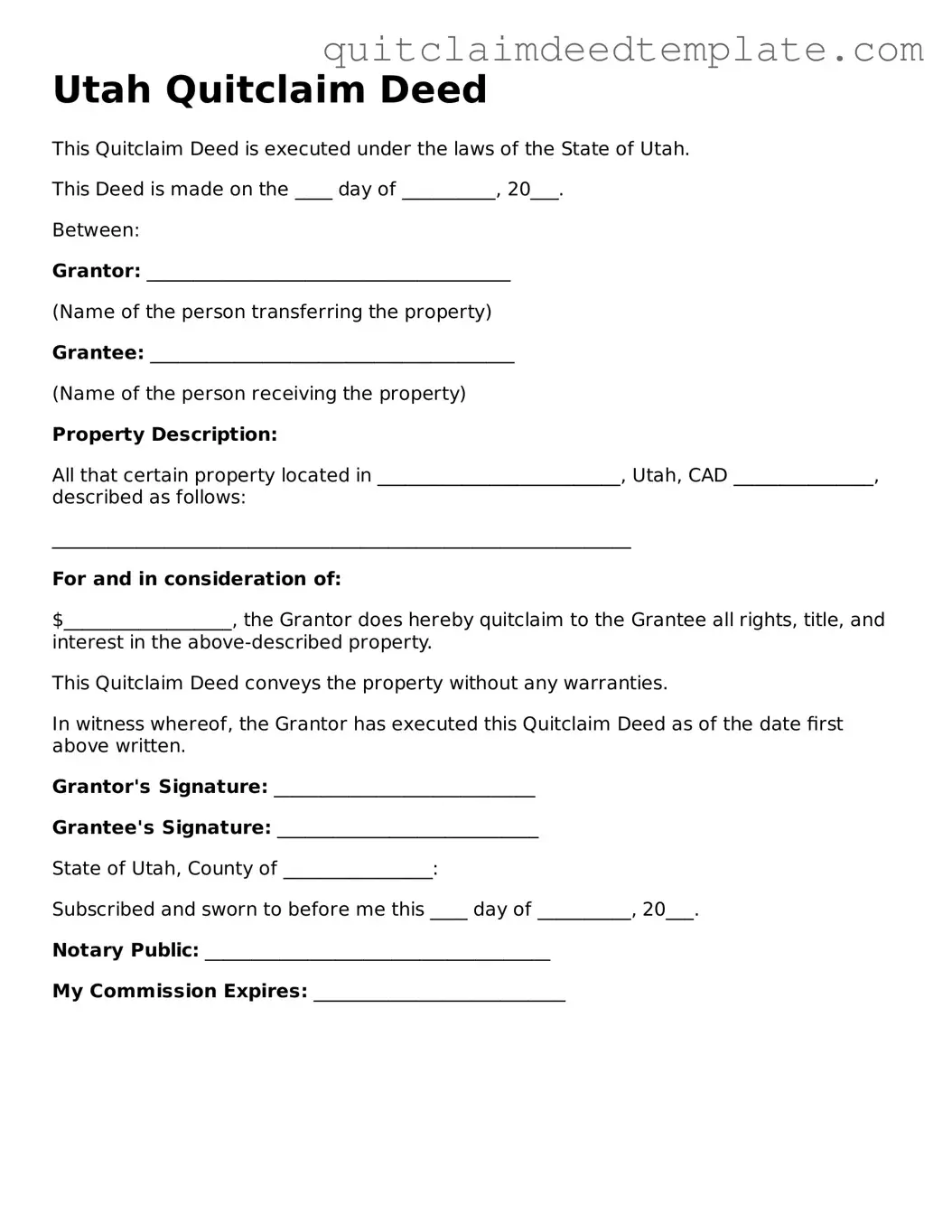Documents used along the form
When transferring property ownership in Utah, the Quitclaim Deed is often accompanied by several other important documents. Each of these forms serves a specific purpose in ensuring that the transaction is clear, legally binding, and properly recorded. Below is a list of common documents used alongside the Quitclaim Deed.
- Property Transfer Tax Declaration: This form is required to report the transfer of property and assess any applicable taxes. It provides information about the property and the transaction details.
- Affidavit of Identity: This document helps verify the identity of the grantor and grantee involved in the property transfer. It can prevent fraud and ensure that the transaction is legitimate.
- Title Insurance Policy: While not a mandatory document, obtaining title insurance protects the buyer against any future claims or disputes regarding the property’s title.
- Grantor/Grantee Information Form: This form collects essential details about the parties involved in the transaction, ensuring that the Quitclaim Deed is filled out accurately.
- Notice of Completion: This document may be filed after the property transfer to notify relevant parties that the transaction has been completed and is now a matter of public record.
- Power of Attorney: If one party cannot be present to sign the Quitclaim Deed, a Power of Attorney allows another person to act on their behalf in the transaction.
- Property Survey: A survey may be necessary to clarify property boundaries and ensure that the deed accurately reflects the land being transferred.
- Mortgage Release or Satisfaction: If the property being transferred has an existing mortgage, this document shows that the mortgage has been paid off and releases the lien on the property.
- Certificate of Trust: For properties held in a trust, this certificate verifies the trust's existence and the authority of the trustee to transfer the property.
Using these documents in conjunction with the Quitclaim Deed can help facilitate a smoother property transfer process. It is essential to ensure that all necessary forms are completed accurately to protect the interests of all parties involved.
